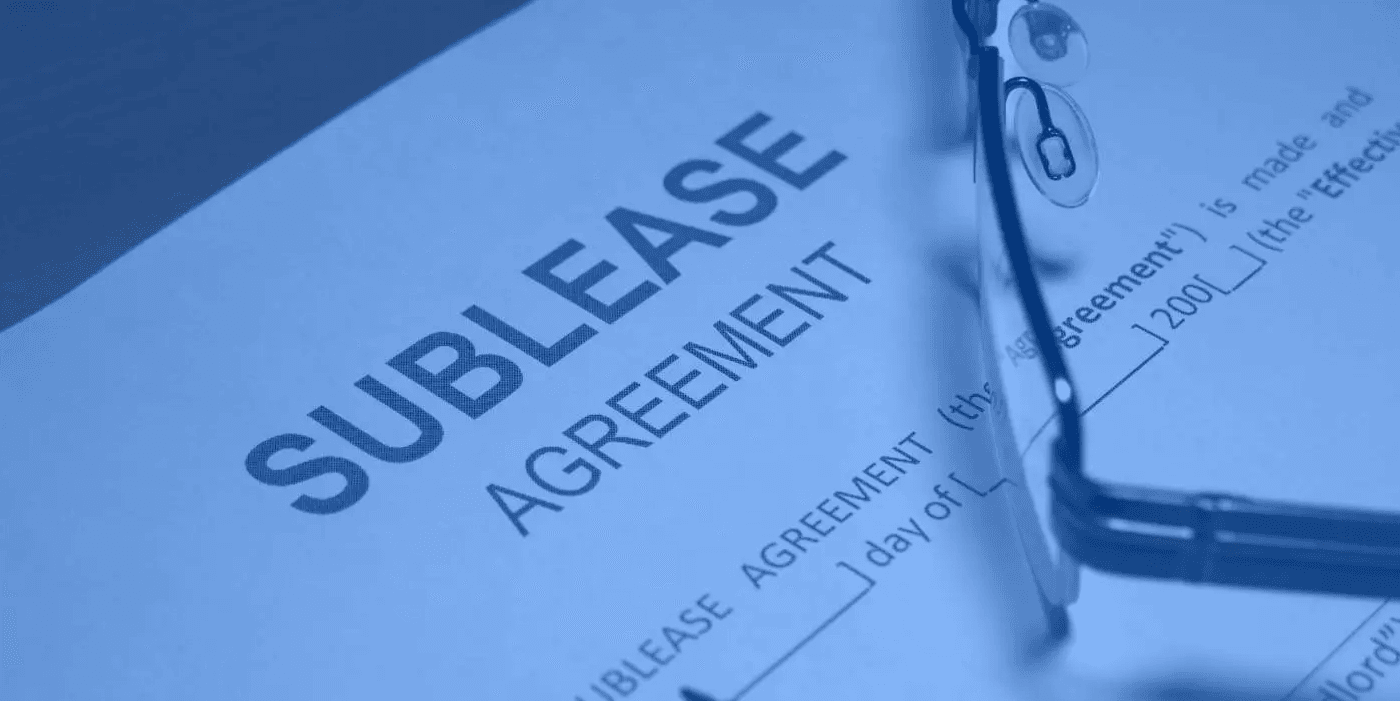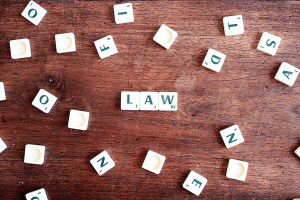Are you a property manager or a landlord? If so, you should understand the importance of ensuring that every property unit is rented while monthly rents are being paid promptly. Yet, it must be stressed that circumstances can change suddenly for renters. As a result, they may need to move out earlier than planned. These circumstances can range from job relocation and changes in family dynamics to financial difficulties.
Whether it is to relocate for a new job position or to move into a new home, unexpected situations can arise at any time. When this happens, tenants must adjust to these significant changes. One way for tenants to adjust to changing living circumstances even when they have an ongoing lease is to make a sub lease agreement.
It is important to understand what a sublease is and if you should allow your tenants to sublease your apartment units. Keep reading this comprehensive guide to acquaint yourself with subletting and sub lease agreements. So, let’s dive in!
Understanding Subleasing
What Is a Sublease? What Does Sublease Mean?
Subleasing (or subletting) is a legal arrangement where a tenant, known as the original tenant or sublessor, leases a portion or all of their rented space to another individual, the subtenant or sublessee. This sub lease agreement is typically shorter than the original lease term. Essentially, what does sublease mean? It means the original tenant is acting as a landlord to the subtenant, while still remaining a tenant to the original landlord.[1]
With subleasing, the original renter can either gain or move a roommate without going against their lease terms. In this case, the subtenant must report directly to the original tenant. Any damages incurred by the subtenant must be known by the original tenant. After all, the latter is responsible for the subtenant’s payment, as well as any damages.
This means that even if the subtenant fails to pay rent or causes damage, the original tenant is legally obligated to the landlord under the original lease agreement. This principle is rooted in contract law and is reinforced by landlord-tenant legislation in various jurisdictions.[4]
The sub lease agreement ensures that the subtenant has the right to take over the rented premises from the original renter. Oftentimes, the subtenant pays rent to the original tenant, who must then pay the rent directly to the landlord. However, it is also possible for the subtenant to pay directly to the landlord.
Even this doesn’t stop the landlord from holding the original tenant directly responsible for any damages incurred by the subtenant, as well as the rent. As mentioned earlier, this makes it imperative for the first tenant to inform the landlord before making any attempts to sublease the premises.
Why Do Tenants Sublease?
Subleasing, the act of renting out a leased property to another party via a sub lease agreement, is often a practical solution for tenants facing changing circumstances. Here are some of the primary reasons tenants choose to sublease:
- Relocation: A tenant might need to move to a new city or state due to work opportunities, personal commitments, or life changes. Rather than breaking their lease—often an expensive or complicated process—they opt to sublease the property for the remainder of their term through a sub lease agreement.
- Financial Constraints: Unforeseen financial challenges, such as job loss, medical bills, or unexpected expenses, can make it difficult for tenants to afford their monthly rent. Subleasing allows them to share or transfer the rental burden to another individual.
- Temporary Absence: For tenants planning a long vacation, work assignment, or a study abroad program, subleasing is a convenient way to maintain their lease without paying rent for an unused space. This option also ensures the property is occupied and cared for during their absence.
Risks and Benefits of Subleasing
Subleasing has its advantages for tenants and landlords alike, but it’s not without its challenges. Understanding these risks and benefits is crucial for all parties involved in a sub lease agreement.
Benefits of Subleasing
- Financial Relief for the Tenant: Subleasing provides a solution for tenants unable to fulfill their rental obligations, helping them avoid penalties for breaking a lease by entering into a sub lease agreement.
- Consistent Occupancy for Landlords: Subleasing ensures that the property remains occupied, reducing the risk of extended vacancies and helping landlords maintain a steady income.
- Flexibility for Short-Term Tenants: Subleasing arrangements, facilitated by a sub lease agreement, can accommodate individuals looking for temporary housing, such as students or professionals on short-term contracts.
Risks of Subleasing
- Delayed or Missed Rent Payments: Subtenants may fail to make payments on time, leaving the original tenant legally responsible for the overdue rent under the original lease. This can strain the relationship between the tenant and the landlord.
- Property Damage: Subtenants might not treat the property with the same level of care as the original tenant. Damages caused by subtenants can lead to expensive repairs and jeopardize the tenant’s security deposit.
- Legal Complications: Subleasing without the landlord’s written consent, as typically required by standard lease agreements, is a violation of the lease and can have serious consequences for the original tenant. Additionally, failure to comply with local subleasing laws or the terms of the sub lease agreement can lead to disputes or legal action.
Landlords and tenants should communicate clearly and outline expectations in a formal sub lease agreement to mitigate these risks. With proper planning and adherence to legal requirements, subleasing can be a mutually beneficial arrangement for all parties involved.
Subleasing in Ontario
In Ontario, subleasing is primarily governed by the Residential Tenancies Act, 2006 (RTA). While the RTA itself doesn’t explicitly detail the subleasing process, it emphasizes the primacy of the lease agreement. Sub lease agreements in Ontario must comply with the RTA and cannot contradict the terms of the original lease.
Most standard lease agreements in Ontario require the landlord’s written consent for any sublet. Therefore, carefully reviewing your lease is the first crucial step when considering a sub leasing agreement.
It is also highly recommended to consult the RTA and seek legal advice if you have specific questions or concerns regarding a sub lease agreement in Ontario. [4]
Types of Sublease
Short-term subleasing and long-term subleasing are two possible types of subleasing you should know about, which will be reflected in the terms of the sub lease agreement. [1]
Short Term Subleasing
Short-term leasing often involves the original tenant of a premise planning to leave the premise for a short period. For instance, during holiday seasons or vacations, students can sometimes rent out their rooms as they visit their hometown, formalized through a sub lease agreement.
In another scenario, you may have someone deciding to travel for a few months. However, having the room empty while the rent runs is not suitable. As a result, they may decide to rent out the room for that specific period using a sub lease agreement.
Long Term Subleasing
Long-term leasing involves more of a permanent change of location for the original tenant, who may then intend for the new tenant to take over the residence until the terms of the lease expire, often formalized by a comprehensive sub lease agreement. For instance, if an original tenant pays for a rent, but after a period, there is a need to change location (for job positions or new homes), the most suitable option is long-term leasing.
Usually, when it comes to long-term leasing, tenants may choose to sublet. However, any responsibility for the property is then passed from the original tenant to the new tenant under the terms of the sub lease agreement.
The Subleasing Process
As a landlord, you must understand how the subleasing process works. This ensures that any form of disagreement is prevented in the future. Usually, the two tenants (the original tenant and the subtenant) must agree to and sign a sub lease agreement before anything can be made legal.
The Sublease Agreement
Before any subleasing can proceed, and most importantly, after reviewing the original lease agreement to ensure it permits subletting*, the two tenants (the original tenant and the subtenant) must agree to and sign a sub lease agreement. This legally binding document outlines the terms of the sublease arrangement.[2]
This agreement should outline:
- Liability for Damages: Who is responsible for repairs or replacements due to damage caused by the subtenant? This should be clearly defined in the sub lease agreement.
- Rental Payment Responsibility: Does the subtenant pay the original tenant or the landlord directly? The sub lease agreement must specify the payment flow.
- Reporting Structure: To whom does the subtenant report any issues or concerns? This is an important detail for the sub lease agreement.
Once the sub lease agreement is signed, the subtenant can move into the property. However, the original tenant remains ultimately responsible for the lease terms and ensuring rent is paid to the original landlord.
If the subtenant does not make the full payment at the right time, the responsibility for this payment falls on the first tenant. Once the terms in the sub lease agreement expire, the original tenant can either assume the tenancy of the premises again or simply allow the landlord to lease out the unit to another interested party.
Best Practices When Subleasing
While the original tenant is responsible for finding a suitable subtenant, landlords play a crucial role in the subleasing process. Here are some best practices to protect your interests and ensure a smooth transition when dealing with a sub lease agreement:
- Lease Agreement: Ensure your original lease agreement explicitly outlines subletting rights and responsibilities. This includes specifying whether subleasing is permitted and, if so, under what conditions. Any sub lease agreement must adhere to these terms.
- Tenant Screening: The original tenant is primarily responsible for screening potential subtenants. However, landlords have the right to approve or deny a sublease request based on the suitability of the proposed subtenant, as outlined in the original lease. Landlords should ensure their lease specifies the criteria for subtenant approval for any potential sub lease agreement.
- Communication: Maintain open communication with both the original tenant and the subtenant. Address any concerns promptly and ensure everyone understands their responsibilities under the original lease and the sub lease agreement.
- Sublease Agreement Review: Landlords should review the sub lease agreement to ensure it aligns with the original lease terms, including rent amount, permitted use of the property, and other relevant clauses. The sub lease agreement cannot grant the subtenant more rights than the original tenant has under the master lease.
- Rent Payments: Verify that rent payments are made on time and in full. You can decide if the subtenant pays the original tenant or directly to you. Regardless, the original tenant remains ultimately responsible for rent.
- Property Condition: Conduct regular inspections to ensure the property is well-maintained. This helps identify any potential damage caused by the subtenant.
- Consult Local Laws: Both tenants and landlords should be aware of any local ordinances or regulations that may affect subleasing, particularly concerning a sub lease agreement if the property is in Ontario.
By taking these steps, you can mitigate potential risks associated with subleasing and protect your property investment.
Conclusion
By understanding the nuances of subleasing, including what is a sublease, what does sublease mean, the terms of the original lease, and applicable local laws, landlords can mitigate risks and ensure a smooth transition for both the original tenant and the subtenant when a sub lease agreement is involved.
Open communication, clear lease agreements, and adherence to legal requirements are essential to a successful subleasing arrangement. Remember, always consult the lease agreement and relevant landlord-tenant laws for your specific jurisdiction, especially concerning a sub lease agreement in Ontario.
It’s important to remember that subleasing without the landlord’s written permission is a violation of the lease agreement. As a landlord, you have the right to approve or deny a sublease request, and this process is often outlined in the original lease and must be respected by any sub lease agreement.
Sources
- What Is a Sublease? Meaning, vs. Sublet, and Example – Investopedia
- Occupancy rules: Guests, roommates, subtenants and lease assignments – Ontario Housing Law
- LTB | Landlords, Tenants, Occupants and Residential Tenancies – Tribunals Ontario
- Residential Tenancies Act, 2006, S.O. 2006, c. 17 – Ontario.ca
- [Subletting a Rental Unit](https://landlordselfhelp.com/podcast/subletting-a-rental-unit/#:~:text=The tenant must get the,should not unreasonably withhold permission.) – Landlord’s Self Help Centre
- [Understanding Landlord-Tenant Law in Ontario](https://welcomehomepropertymanagement.ca/understanding-landlord-tenant-law-in-ontario/#:~:text=The RTA serves as the,and protections for both parties.) – Welcome Home Management
- Subleasing Without Permission: Advice for Ontario Landlords – Maximum Property Solutions






